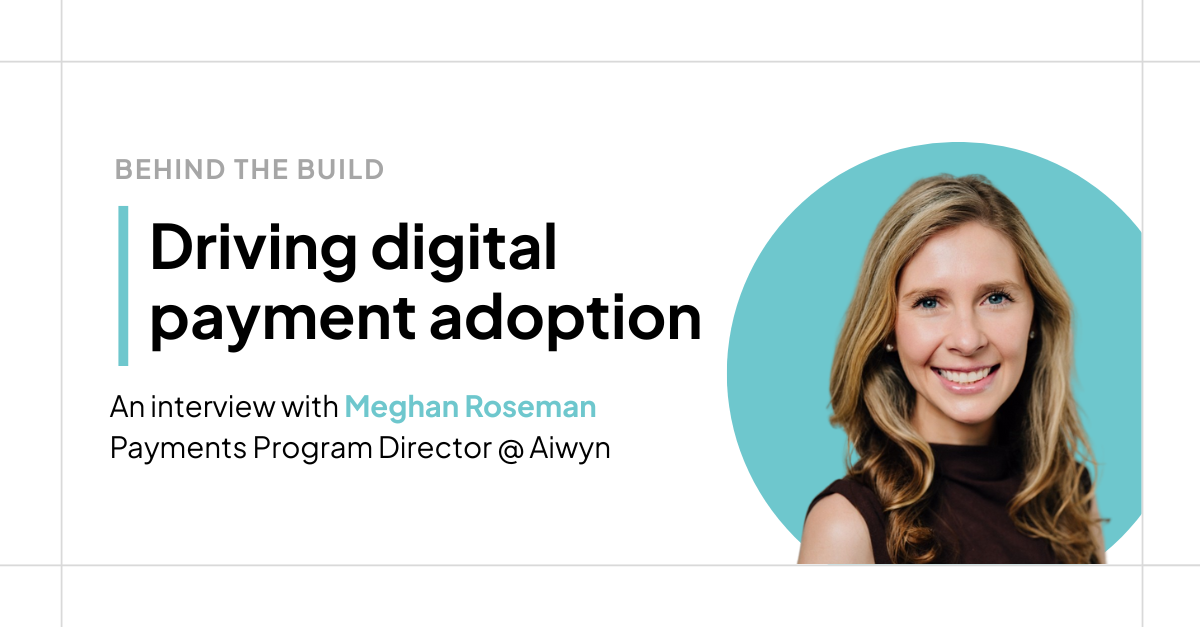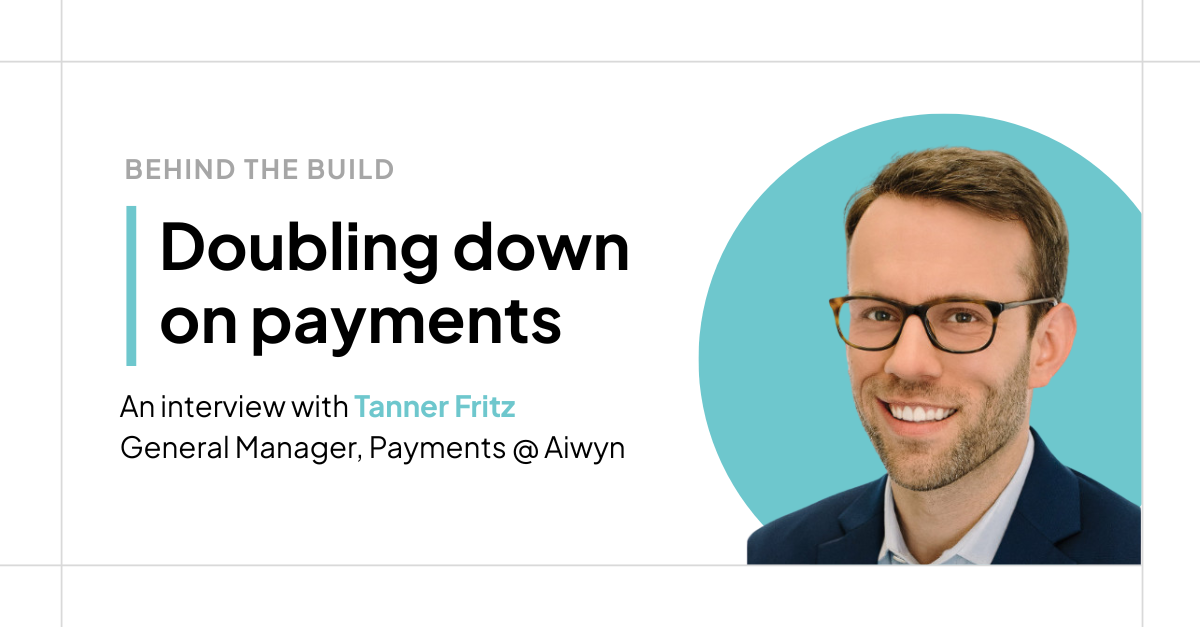Digital transformation doesn’t succeed on software alone, it’s powered by the people and processes that bring it to life. Meghan Roseman, Payments Program Director at Aiwyn, knows this well. As a key member of our Payments team, Meghan partners closely with firms to increase online payment adoption, enhancing AR performance and operational efficiency.
In this edition of Behind the Build, Meghan shares her approach to leading effective change, the best practices she’s seen deliver meaningful results, and why online payments are essential to unlocking stronger firm performance.
Q: Share a little bit about yourself and your role at Aiwyn.
A: I’ve spent nearly 10 years leading organizations through change. I started at KPMG and Accenture where I was focused on planning and executing large-scale finance transformations. Before Aiwyn, I was at a tech startup driving growth and change initiatives.Change management has always been a central theme in my career.
At Aiwyn, I’m the Payments Program Director. I work closely with firms to increase online payment adoption through process, people, and data initiatives.Online payment adoption accelerates cash flow, enhances operational efficiency, and elevates the client experience.
Q: What are some of the biggest mindset shifts firms need to make when adopting digital payments?
A: Two shifts stand out. First, just because something is familiar does not mean it is the best option. Sticking with outdated processes can hold firms back from competing effectively. Second, real transformation comes from aligning people, processes, and data alongside the right tools. Success happens when firms approach this as a change initiative, not just a tech upgrade.
Q: How do you help firm leaders and their teams feel confident by navigating that change?
A: It starts with clearly understanding the “why.” When leaders know the value - faster cash flow, time savings, stronger security, and a better client experience -they can communicate that message effectively to the rest of the firm. That alignment creates clarity and builds confidence, which is essential to driving successful change.
Q: What best practices have you seen work consistently when it comes to driving adoption?
A: I focus on four core areas:
- Firm-wide awareness and accountability – Make sure everyone understands the goal and why it matters. Then establish metrics to track progress, build accountability, and keep people engaged.
- Process standardization – Align billing and collection processes firm-wide, across all service lines and offices, starting with client onboarding to set clear expectations from day one.
- Data integrity – Maintain accurate and consistent client contact data - clean data drives better reporting, greater accountability, and stronger outcomes from your technology investments.
- Training and enablement – Ensure client-facing teams are well-trained, not just on the tech, but also on how to speak to the strategy behind it. That enables them to address client questions with confidence.
Q: What internal champions or roles are critical to successful rollout?
A: It begins with executive sponsorship. When leaders are actively engaged, it reinforces the priority and value of the initiative.
From there, it’s about empowering teams. They’re the ones having daily conversations with clients, so they need the training, support, and confidence to clearly explain what’s changing and why it matters. When leadership provides a clear strategy and expectations, and teams are equipped and motivated to act, adoption happens with far less friction.
Q: When it comes to Aiwyn, which features tend to move the needle most for clients?
A: The biggest driver is convenience. Smart Statements make it simple for clients to pay with a clear call to action right in the email.
The client portal is another powerful tool. It gives clients an easy way to view their invoice and payment history all in one place. These features save time for both the firm and the client.
Q: What’s something firm leaders often don’t realize about their clients’ payment experience?
A: Convenience is no longer optional. Clients expect easy, digital ways to pay.
Sending checks creates uncertainty, takes time, and comes with a higher risk of fraud.
There is also a broader shift happening. By September, the federal government will stop issuing paper checks for all disbursements, setting a new digital standard. The firms that embrace digital payments now are setting themselves up to meet rising client expectations and reduce their own risk.
Q: Any advice for firms starting their digital payment journey?
A: Start by building awareness across the firm. Make sure everyone understands the “why.” Benefits like improved cash flow, reduced aged AR, operational efficiency, and reduced security risk need to be clear.
That shared understanding will help uncover where more support or process improvements are needed. It could be inconsistent onboarding, low adoption in certain service lines, or a need for more training. Awareness is the first step in creating momentum and driving meaningful change.
Curious how other firms are navigating digital payment adoption?
Meghan recently shared more insights in a webinar with Boomer on successful transitions. Read the highlights and key strategies firms are using to drive adoption.




